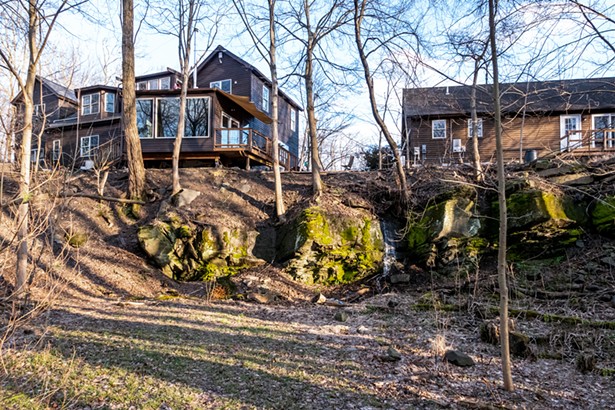
By consensus, Friday evenings on Cantine’s Island are a jolly affair. Each week, from 5 to 6 pm, residents of the cohousing community gather for happy hour—one of many regular get-togethers designed to strengthen the bonds of this flourishing intentional community which is one part lifestyle, one part old-fashioned neighborhood. Sharing almost 10 quiet acres enveloped by a meander of the Esopus Creek, the community’s 19 privately owned homes, as well as commonly owned outbuildings and green spaces, were designed to strike a balance between privacy and interconnection.
Attending the weekly gathering isn’t mandatory, but it is enticing. On a recent mild spring evening, the variety of the community’s residents, and the deep bonds they’ve formed over years of building their thriving cooperative neighborhood, are on full display. “OG” retirees, some of them residents since the association first broke ground on the site in 1997, gather around a table on the property’s common patio. Children take advantage of the warm spring weather, setting up a ping-pong table or playing on the central green space ringed by 12 of the original single-family homes. Other children dart into the community’s six acres of preserved woodlands. A few parents play with the children, while others take a break to socialize with their neighbors.
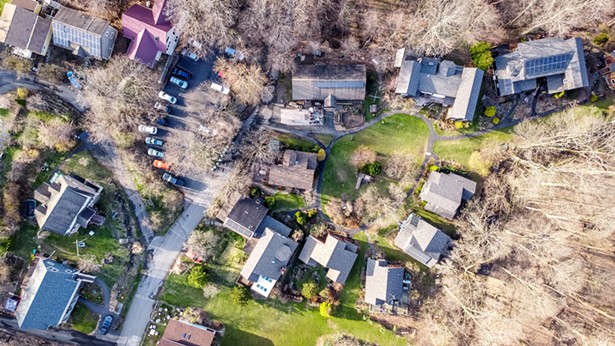
Plenty of homemade nourishment, laughter, and talk are on hand, as well as the requisite bottle of wine. The adjacent common house, complete with a full kitchen, dining area, and living room, serves as gathering site in inclement weather and over the years it’s seen—along with weekly shared dinners—group yoga classes, music jam sessions, holiday celebrations, and many, many birthday parties.
It’s also the site for the multiple committee meetings it takes to run this community harmoniously. “Cohousing is not a commune,” says Dorothy Lagana, the chairperson of Cantine Island’s community living committee. “We share—but not in everything. We are also not a spiritual or eco-village, though we do work as a community to make decisions in line with caring for the future.” The modern cohousing movement began in Denmark in the 1960s and eventually spread to the United States where it’s estimated there are now more than 160 communities. While there are multiple models for this lifestyle, typically, members own their own homes and share ownership of common buildings and resources according to their location and needs. Cantine’s Island is legally structured as a homeowners’ association and along with the common house, green, and nature preserve, residents also share a garden, a parking lot, certain large appliances such as lawnmowers and a communal washer-dryer, as well as a beach along the Esopus, and a resident boathouse with shared kayaks and canoes.
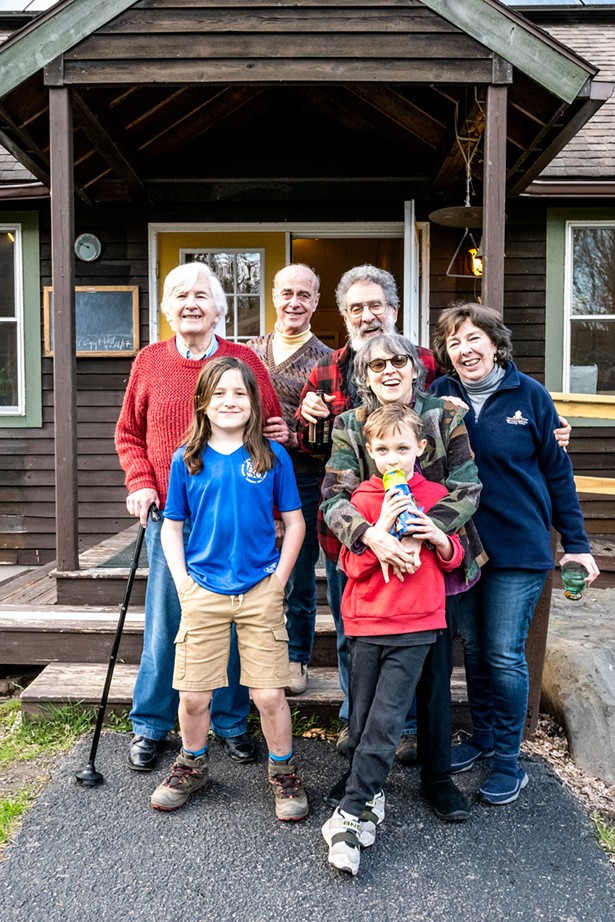
One thing it doesn’t have is a president or board. Rather, the community is committed to governing through consensus and members participate in committees overseeing everything from architectural changes to site maintenance to, even, parenting in the community. While there are some official requirements to become a new member, it seems the number one unofficial requirement is a combination of patience and compromise. “More than anything, we trust each other,” explains Peter Poccia, one of the groups founding members. “If we voted on something and I win the vote, but my neighbor losses, I’d be happy and my neighbor would be unhappy. But we’d still have to live together. It’s worth the time it takes to find solutions that work for everybody.”
Finding Fellow Travelers
Indeed, patience and compromise are required just to take a cohousing project from inception and aspiration all the way to manifestation. This is especially true in New York State, where anti-fraud laws such as the Martin Act make it hard for individuals to pool the financial resources necessary to get a cohousing development off the ground. These are obstacles Angela Garnier and Elissa Cohen, founding members of the Hudson Valley Cohousing Study group, know well. “Cohousing is a bottom-up model, with a group coming together that want to live together intentionally,” says Cohen. “Rather than just buying property from a developer, our members want to be involved with the whole process of designing and developing the community structures according to our needs.”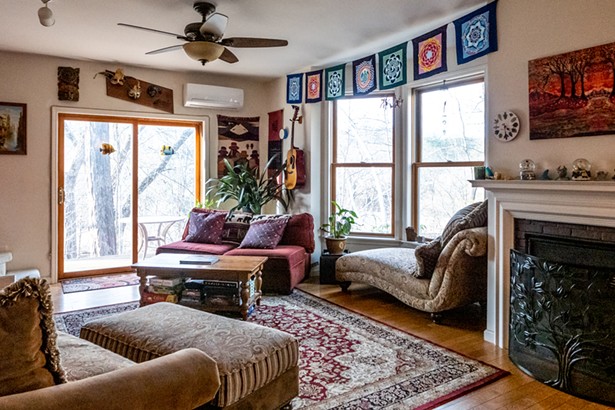
Formed a year ago, their exploratory group has been delving into ways cohousing can become a more prevalent reality in the Hudson Valley. Right now, the group meets regularly on Zoom to discuss issues surrounding the movement and to get the word out to others who may be curious about living in an intentional community. They also regularly visit other cohousing communities throughout the Northeast. “In the end, it’s really about the journey,” explains Cohen. “It’s not for the faint of heart. However, through the process of coming together, figuring out what the structures will look like, facing the obstacles and weathering the ups and downs of the process actually forges the community required to see it through. It’s almost necessary to the process.”
How it Started
Susan Murphy, Poccia’s wife and sometimes considered the mother of Cantine’s Island, might agree with that sentiment. “My number one advice for a new group is that somebody has to be the burning soul,” she says. “There are so many challenges and risks, you have to keep your eyes on the prize and never waver.” Formerly a nurse in New York City, Murphy was taken by the social isolation often faced by her elderly patients. “Often that social isolation led to a downward spiral,” she says. “They would get depressed, they would stop eating well, and then get debilitated from a lack of activity. I never had a large family, I never had a lot of money, and I’m a bit introverted. I realized I was actually at risk for the same thing happening.”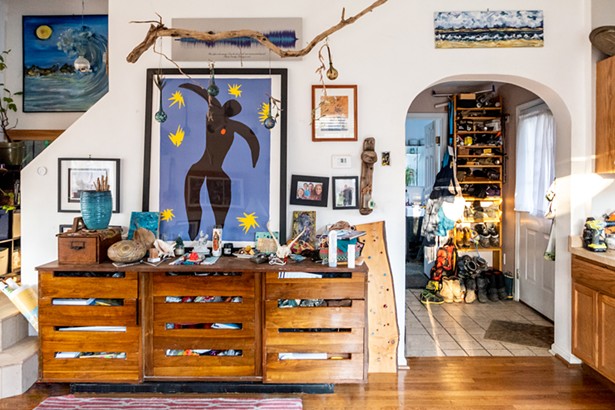
Murphy and Poccia often travelled to the Hudson Valley as members of the Clearwater committee and already loved the area. In 1990, on one of their trips upstate, they saw a classified notice about a Saugerties based cohousing community that was forming. The site’s 10 acres had been donated to the group with the provision that the creekside area would remain preserved land and could never be sold piecemeal. Poccia and Murphy attended a meeting and went to see the site. “I was like, bingo! There it is!,” she says. “I realized this is what I needed to do for myself and my husband agreed.” The couple bought a car and came up every other weekend to attend meetings.
“It actually took seven years,” she says. In that time, other members came and went, but Murphy and Poccia remained. With an eye toward sustainability, the community eventually decided on building 12 modular homes and a common house, all designed to blend in with the surrounding environment. Working with architect Raym de Ris, each structure was carefully planned to balance the needs of the family with the whole ethos of the shared property. Just around 1,000 square feet, Murphy and Poccia’s home includes an open-concept living room, dining room and kitchen on the first floor as well as a guest room. The couple’s large primary bedroom, bathroom, and ample closet space are upstairs. Eventually, the community expanded, buying two adjacent properties, renovating one home and building others for a total of 19.
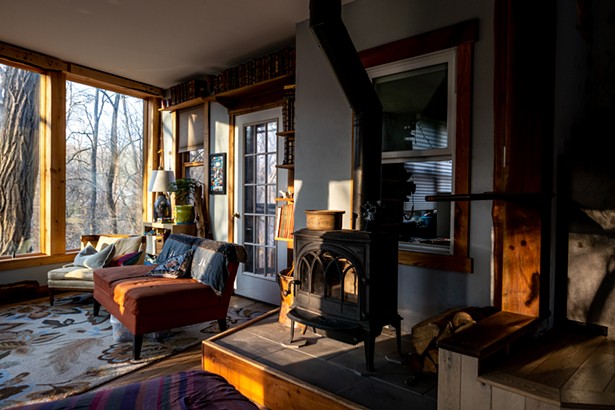
How It’s Going
While it does take work, according to residents of Cantine’s Island, the benefits of living in a cohousing community are exponential and felt for generations to come. Leah Novak moved with her husband, Jason Novak, to the community in 2008, first as a renter, then buying a 1,700-square-foot, three-bedroom house overlooking the woods and the creek. “We were really looking for a space where we could get to know our neighbors and be friendly with the people around us,” she says. While they loved the site next to the Esopus Creek, the extra green space and the fact that cars are relegated to a parking lot rather than driving by their front door, the community’s deeper benefits didn’t become apparent until the couple started a family. “Everyone here values both community and privacy,” says Novak. “When you are out in the common areas, neighbors will stop and say hi, but they also respect your privacy. In fact, when I had a newborn I didn’t understand why no one was pounding down the door to see him. Then I realized they were just respecting my space.”Eventually Novak left the house and brought her son, now 12, to one of the community’s weekly dinners. As soon as she walked in the door, arms went up asking to hold her baby, offering to give her a break. “It was really like the angels started singing,” she says. “As a new mother, I never felt isolated or alone.” Over the years, as a working parent, the benefit of having weekly shared meals has helped Novak balance the modern-day dilemma of having both a family and a career. Learning to work with other parents to compromise when parenting styles clash has deepened her compassion for her neighbors and different ways of thinking in general. “Living here has spurred both great personal and professional development,” she says.
Novak believes learning to live in the community has been a blessing for her children as well. Not only do her children have the benefits of friends to grow up alongside, she loves watching the cross-generational relationships that evolve between the children and the founding residents. “They have older neighbors to learn skills from and to take care of,” says Novak. “My 10-year-old routinely takes in groceries for an older neighbor and also does random chores for another. They benefit from being around others and learning how to give back to others.”
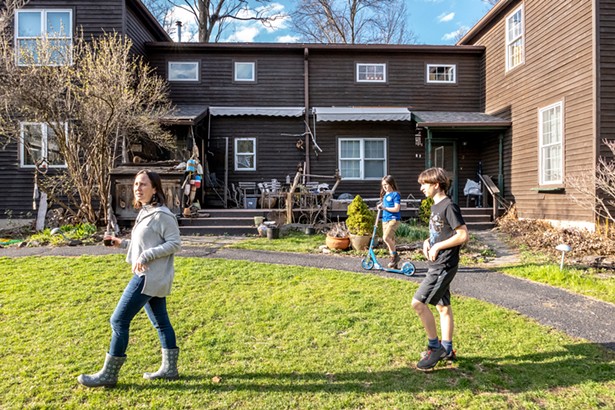
“In this busy life, it’s so nice to have community right outside your door,” she adds. “It’s like an old neighborhood where everyone knows everyone, works and plays together, learns from each other, and cares for each other.”







